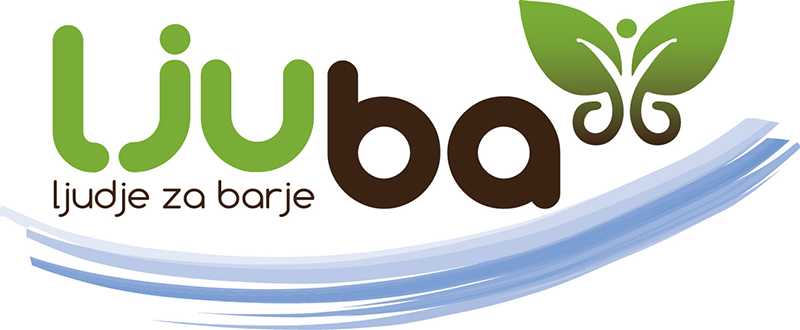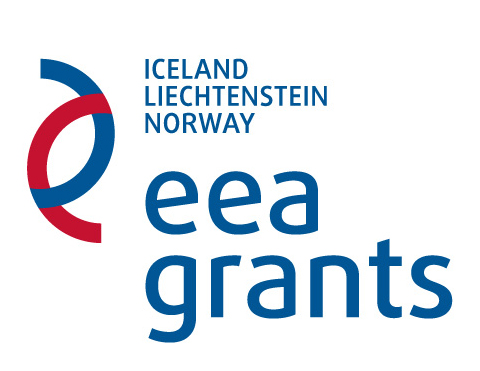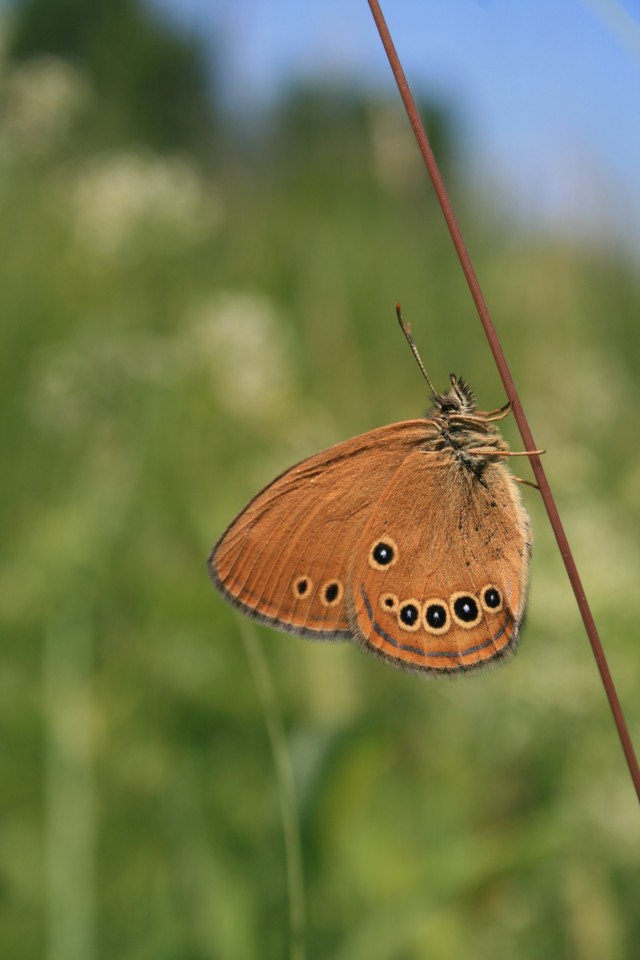False Ringlet
The False Ringlet (Coenonympha oedippus) is one of the most threatened European butterfly species, and protected by the Habitats Directive and Bern Convention. In slovenia the species and its habitats are protected by law.
the species and its habitats are protected by law.
The species’ habitats on Ljubljana Marsh are alkaline fens and oligotrophic (non-fertilised) wet meadows dominated by sedges (Carex panicea, C. davaliana, C. hostiana) and Purple Moorgrass (Molinia caerulea). Adults fly in a single generation from beginning of June until mid July. The main nectar species for butterflies are Tormentil (Potentilla erecta), Devil’s-bit Scabious (Succisa pratensis) and Lesser Spearwort (Ranunculus flammula). Females lay single eggs on different substrata: mainly on larval host-plants (Carex species, Purple Moorgrass), but also on other plant species in their close vicinity. Larvae are heliophilous and thermophilous: they are feeding during the day and basking in the sun in the warmest part of the day in late autumn and early spring. Caterpillars partially feed on their food-plants until the onset of November and some keep sitting (basking) on upper parts of their food-plants even in winter. After hibernation the larvae are still quite small (about 1.3 cm) and not able to move very far to search for food. Thus, they have to find host-plants in their immediate vicinity within a few days as their need for food and liquid is urgent after the long period of starvation during hibernation. At that time, the winter-green leaves of Carex species are the most important food as the Molinia leaves grow to sufficient largeness only about two weeks (or even more) after larval awakening. The larvae pupate on stems or leaves in the middle layer of herb vegetation.
In the last century (until 1990), the False Ringlet patchily inhabited the entire area of Ljubljana Marsh, but from 2001 onwards, only its SE part. In the period 1900–1990 the species lived at least at 10 locations. In 2001–2008 it occurred still at four locations, but in 2014 it was registered only at two of them. Habitat area decreased 86% in the period 2001–2014, and 80% in the last six years (2008–2014). In this period (2008–2014) the population size has declined 69%. The key reason for population decline in the last 15 years is agricultural intensification, i.e. poorly designated agri-environmental measures that encourage farmers to plough and intensify grasslands. The major threats to the species on Ljubljana Marsh are: early mowing (June, July) and baling of hay in a plastic foil; mowing the entire grassland in a single year; fertilisation, ploughing and burning of wet grasslands; regular cleaning of drainage ditches and depositing the excavated material on the grassland surface along the ditch; deposition of soil and waste material on grasslands.
False Ringlet (Coenonympha oedippus), Photo: Čelik T.



